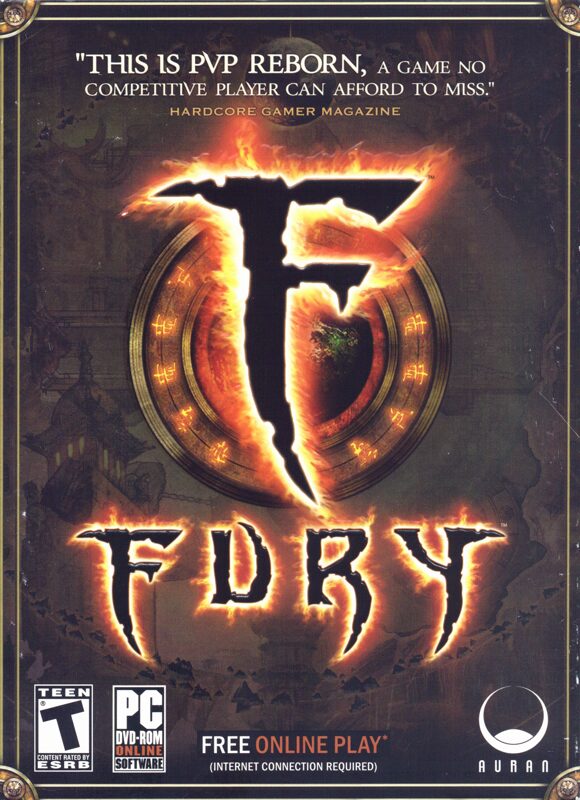Retro Replay Review
Gameplay
Fury delivers an arena-focused, PvP-centric experience that sets it apart from traditional MMOs. From the moment you jump into a Bloodbath match, you’re thrust into frantic, free-for-all combat where survival hinges on both reflexes and smart ability use. The absence of PvE content means there’s no downtime between skirmishes—every encounter tests your build, your aim, and your strategy.
The game offers three core war zone types: Bloodbath, Vortex, and Elimination. Bloodbath pits every player against each other in a chaotic showdown; Vortex is a classic team-based capture-the-flag mode that rewards coordination and map control; Elimination is a best-of-three team fight where each round’s survivors face mounting pressure. Though the planned Fortress siege mode never materialized, the existing modes provide enough variety to keep battles feeling fresh.
Character progression in Fury is entirely free-form. There are no rigid classes—instead, you collect equipment, earn ranks, and purchase skills from a vast roster of abilities. You can save your setups as “incarnations,” allowing swift switches between aggressive, defensive, or utility-focused builds. This flexibility lets you experiment on the fly and tailor your loadout to the demands of each arena or team composition.
The skill-based combat rewards mastery over button combos and positioning more than pure gear score. While higher-tier equipment and cosmetics are available through microtransactions, they don’t grant direct advantage in battle. Instead, they embellish your avatar and open new customization paths, keeping gameplay fair and competitive.
Graphics
Powered by Unreal Engine 3, Fury’s visuals stand out for their crisp textures and dynamic lighting. Arenas are rendered with impressive detail—from gleaming metal corridors to rough-hewn stone battlements—which lends each war zone a distinct atmosphere. Even in high-intensity skirmishes, character models remain clear and well-animated.
For players on less powerful rigs, Fury’s custom fallback renderer ensures playable performance without sacrificing too much visual fidelity. You can dial down certain effects while preserving core graphical elements, making the game accessible to a broader audience. Frame rates stay smooth in most scenarios, even during explosive team clashes where dozens of players converge.
Special effects—shimmering force fields, glowing projectiles, and explosive spell impacts—add spectacle to every fight. While the engine shows its age in some texture pop-ins and less detailed environmental objects at a distance, these minor hiccups rarely detract from the overall immersion. Fury manages a fine balance between high-end eye candy and broad hardware support.
Map design also contributes to the visual appeal. Each arena layout is uniquely themed, with well-placed cover points, vertical routes, and chokepoints that encourage tactical play. The blend of artistic styles—industrial, gothic, and futuristic—keeps the visual experience varied and engaging across different modes.
Story
Unlike narrative-driven MMOs, Fury’s emphasis is on competitive arenas rather than sprawling quests. The story framework is minimal but serviceable: combatants are recruited into an interstellar gladiatorial league where victory means glory and advancement. While there’s no traditional storyline or quest chain, the game sprinkles lore tidbits in menus and loading screens to hint at a wider universe.
The lack of PvE content means you won’t be trekking through story-driven dungeons or following character arcs. Instead, each match acts as a chapter in your personal saga—your victories and defeats shape your progression and reputation within the league. In that sense, the story unfolds dynamically through player-driven drama rather than scripted narrative.
Fury compensates for its narrative leanings with environmental storytelling. Arenas are dotted with banners, statues, and relics that reference past champions and factions, giving a sense of history to the battlegrounds. Though subtle, these visual cues help players feel part of an ongoing conflict rather than isolated skirmishes.
For fans craving more lore, community forums and fan sites often fill in the gaps with player-created backstories and theories. While not canonical, these community narratives enrich the world of Fury and showcase the passion of its player base, turning each arena into a canvas for collaborative storytelling.
Overall Experience
Fury stands out as a pure PvP MMO that excels at arena combat. Its free-form skill system, incarnations, and rank progression offer deep customization that rewards experimentation. Matches are fast-paced and adrenaline-fueled, making every minute feel meaningful. Whether you’re a lone wolf or a team strategist, the game adapts to your playstyle.
The graphics strike a solid balance between spectacle and performance, thanks to Unreal Engine 3 and a smart fallback renderer. While the occasional texture pop-in reminds you of the engine’s age, the overall visual package remains polished and immersive. Arenas feel alive, and special effects during combat heighten the excitement.
On the flip side, the game’s PvP-only focus may disappoint those seeking a narrative-driven MMO or a broader range of gameplay activities. The absence of the promised Fortress siege mode also leaves a gap in large-scale warfare fans might miss. Community size can fluctuate, leading to variable matchmaking times, especially in off-peak hours.
Ultimately, Fury is ideal for players who crave competitive, skill-based battles without the distractions of PvE content. Its fair free-to-play model, combined with deep build customization and engaging arenas, makes it a compelling choice for PvP enthusiasts. If you’re ready to dive into relentless combat and carve your path as a champion of the arena, Fury delivers an experience that keeps you coming back for more.
 Retro Replay Retro Replay gaming reviews, news, emulation, geek stuff and more!
Retro Replay Retro Replay gaming reviews, news, emulation, geek stuff and more!




Reviews
There are no reviews yet.